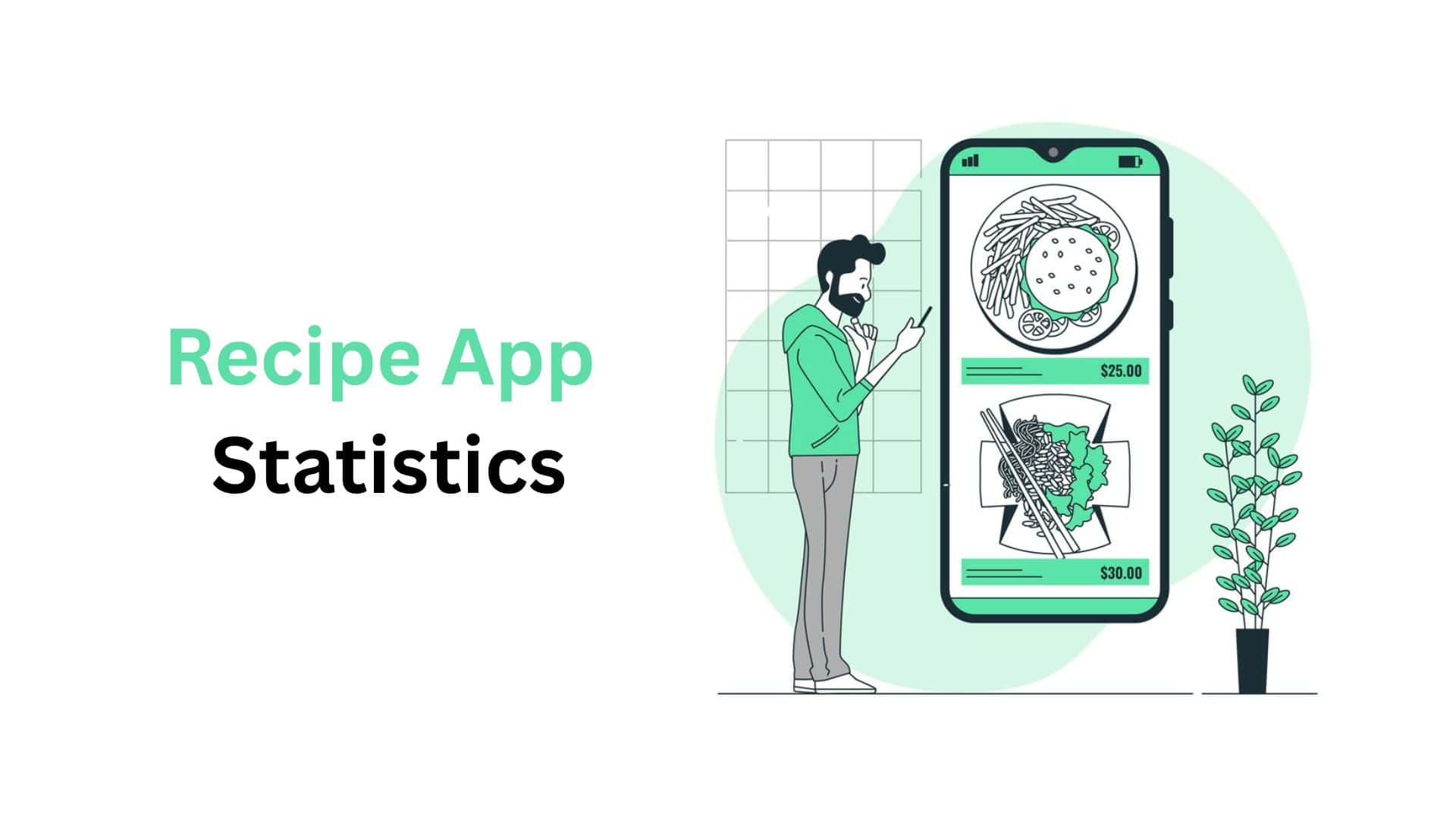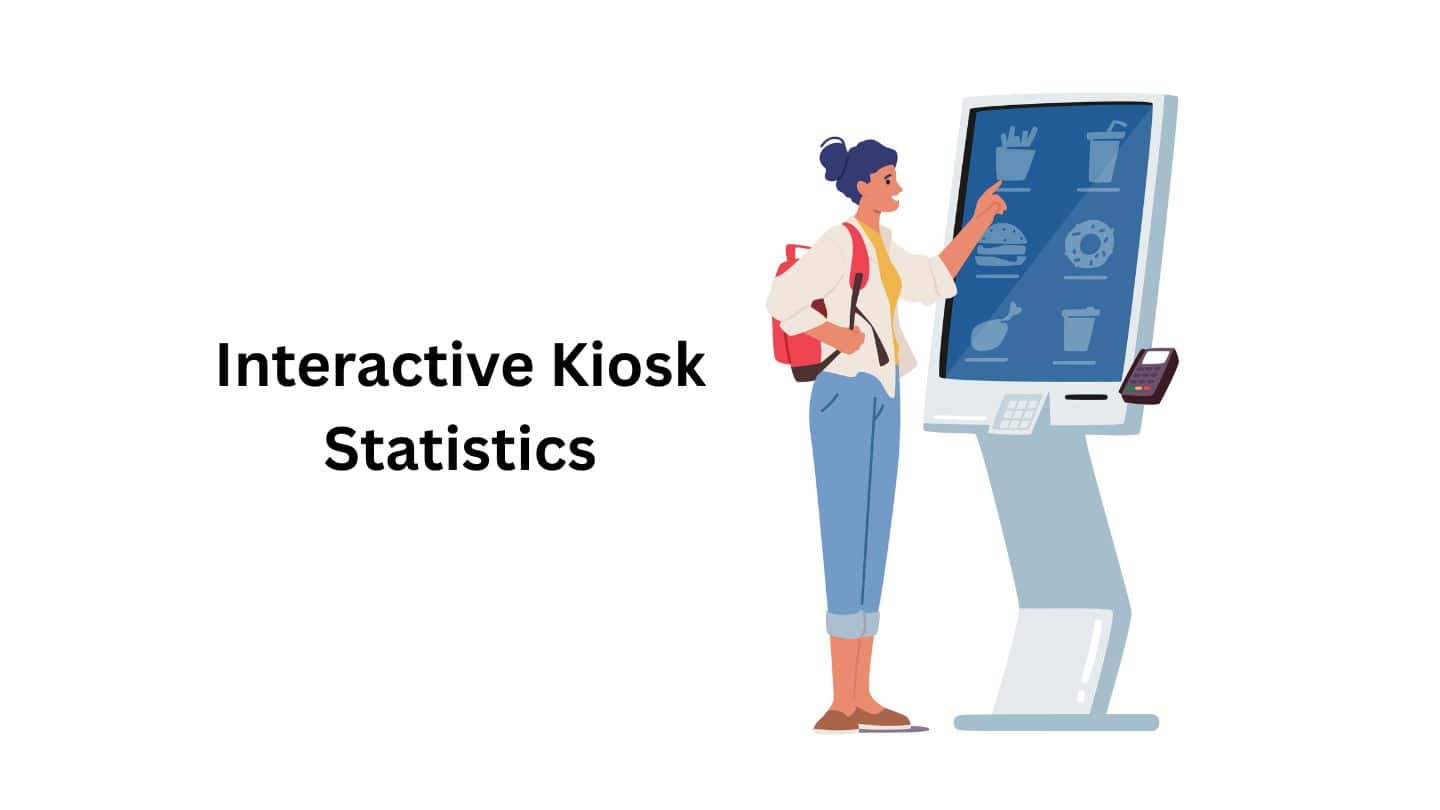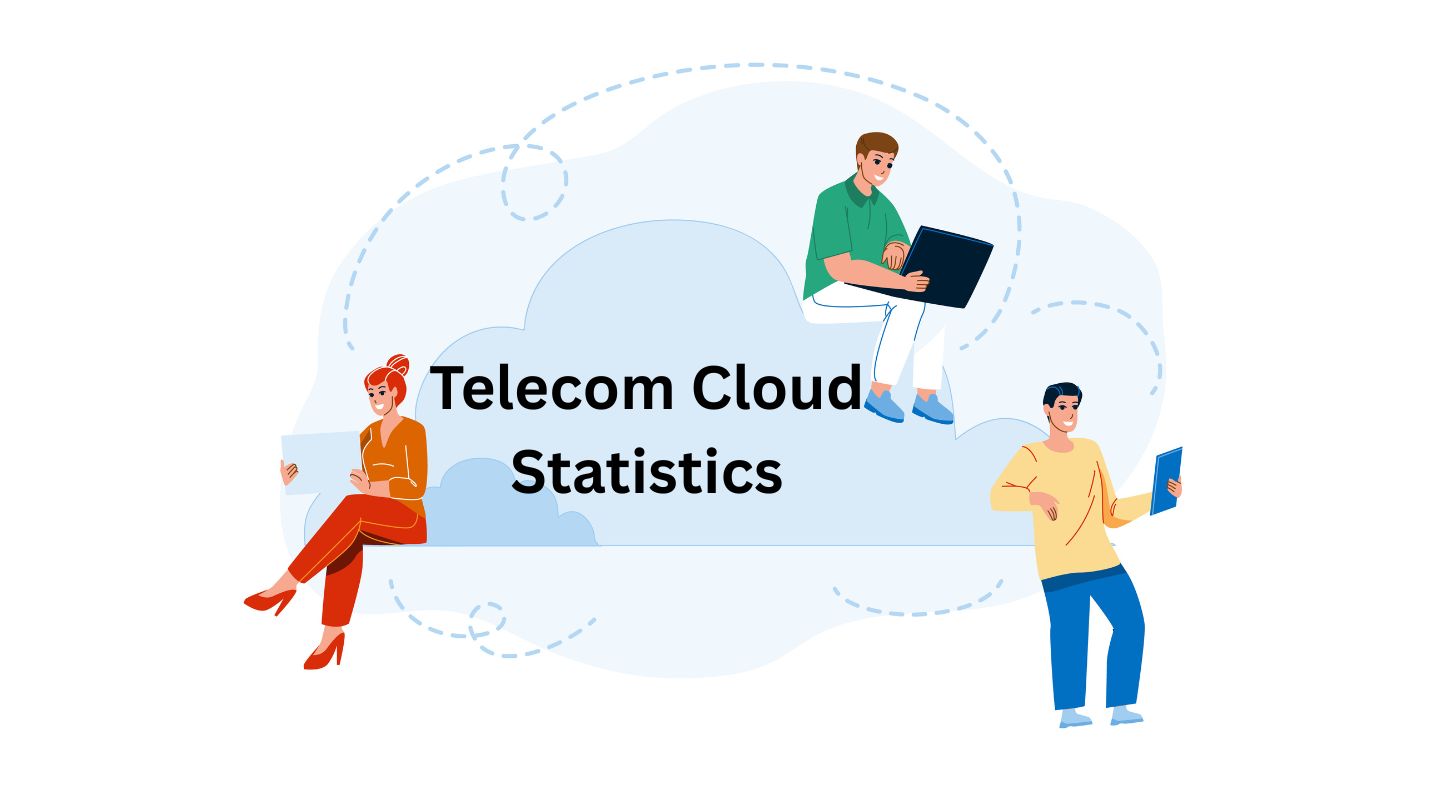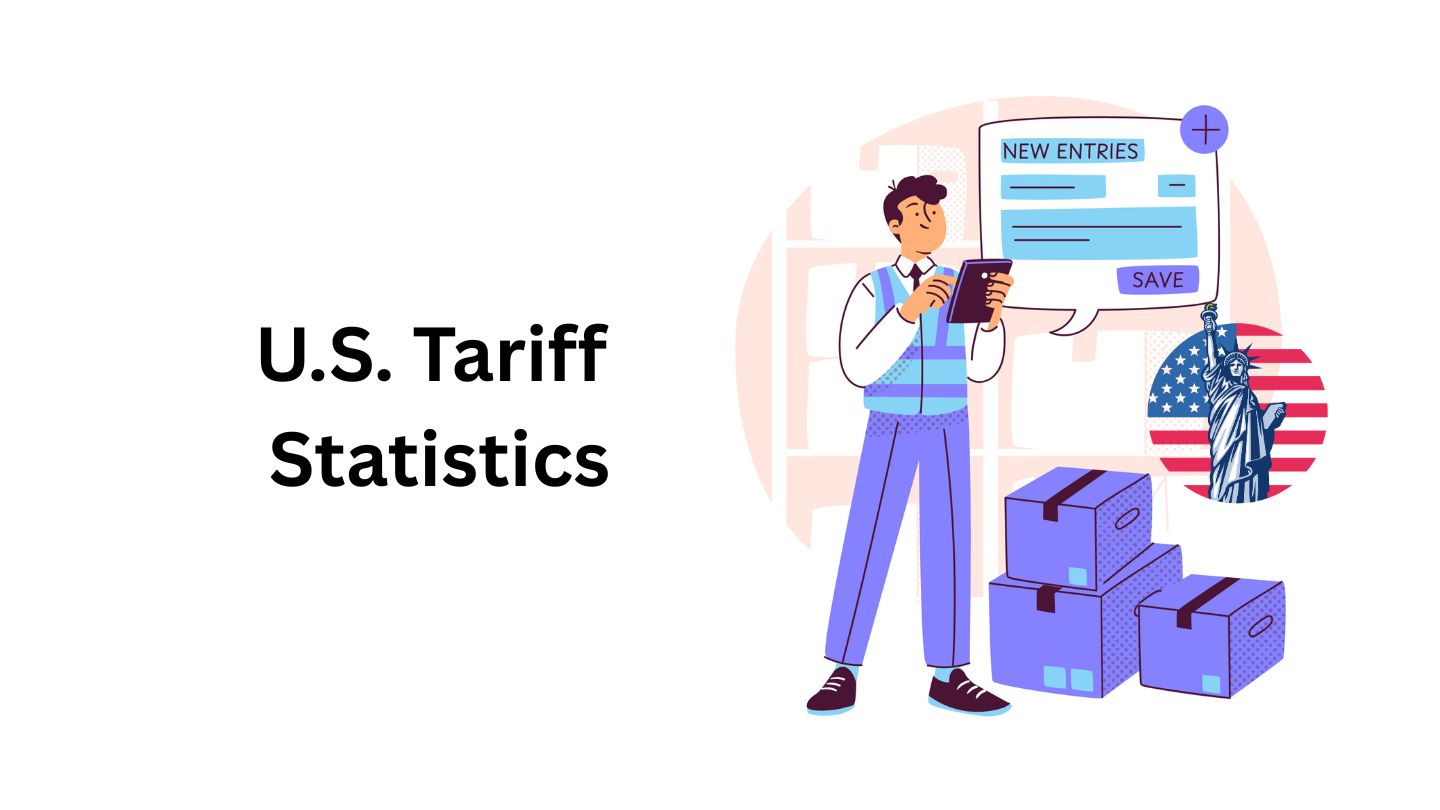Organic Food Statistics By Regions, Store Type, Sales, Brands, Habit, Market Size And People Intake,

Updated · Feb 17, 2025


TABLE OF CONTENTS
- Introduction
- Editor’s Choice
- General Organic Food Statistics
- Organic Food Market Statistics
- By Regions, 2024
- Organic Food Sales Statistics
- Organic and Natural Product Sales Statistics by Store Type
- Leading Organic Items Sales Statistics
- Organic Sales Value Share Statistics
- Popular Organic Food Brands Statistics
- Organic Food Statistics By Consumer’s Spending Behavior
- Consumer’s Habit Statistics by Purchasing Organic Food in 2023
- Consumption of Organic Beverages Statistics
- Organic Agriculture Does Not Use Pesticides To Grow Food.
- Organic Food Market Size Statistics In India
- Organic Dairy Food And Drinks Market Statistics In Latin America
- Most Buyers of Organic Food Statistics By Country
- Organic Food Statistics By People Intake
- Organic Packaged Food Market Statistics
- Factors Influencing Demand for Organic Food
- Conclusion
Introduction
Organic Food Statistics: Organic Food is grown without harmful chemicals, synthetic fertilizers, or pesticides. This type of Food is becoming more popular because people are more aware of health and environmental issues. Organic farming uses natural methods like composting, crop rotation, and biological pest control to grow crops and raise animals. Statistics show that the demand for organic Food is growing every year.
Many countries now have strict rules to ensure organic products are safe and meet quality standards. Organic food markets are expanding worldwide, and more farmers are switching to organic methods. While organic Food can cost more, many believe it’s worth it for better health and a cleaner planet. This shift highlights the importance of sustainable farming practices.
Editor’s Choice
- Organic Food Statistics show that the global organic food market was worth USD 177.08 billion in 2023 and is expected to reach USD 529.64 billion by 2032.
- This growth represents an average yearly increase of 12.99% between 2024 and 2032.
- The organic food market in the United States of America will grow a lot and could be worth about USD 185.47 billion by 2032.
- Meanwhile, in 2023, Europe led the organic foods market, holding 44.17% of the total share.
- Organic farming is done in 191 countries, with about 3.7 million farmers managing 76 million hectares of land organically, according to the 2023 report by the Research Institute of Organic Agriculture.
- To date, organic farming can cut the use of fossil fuels in growing crops by 70%.
- Organic Food Statistics further reports that India leads globally in the number of organic food producers, with over 1.6 million certified organic farmers.
- Nearly 90% of Americans are familiar or somewhat familiar with organic claims when purchasing food products.
- As of 2024, certified organic products accounted for 5.7% of all Food sold through retail channels in the U.S.
- Fresh fruits and vegetables are the leading categories, comprising about 40% of U.S. organic food sales.
General Organic Food Statistics
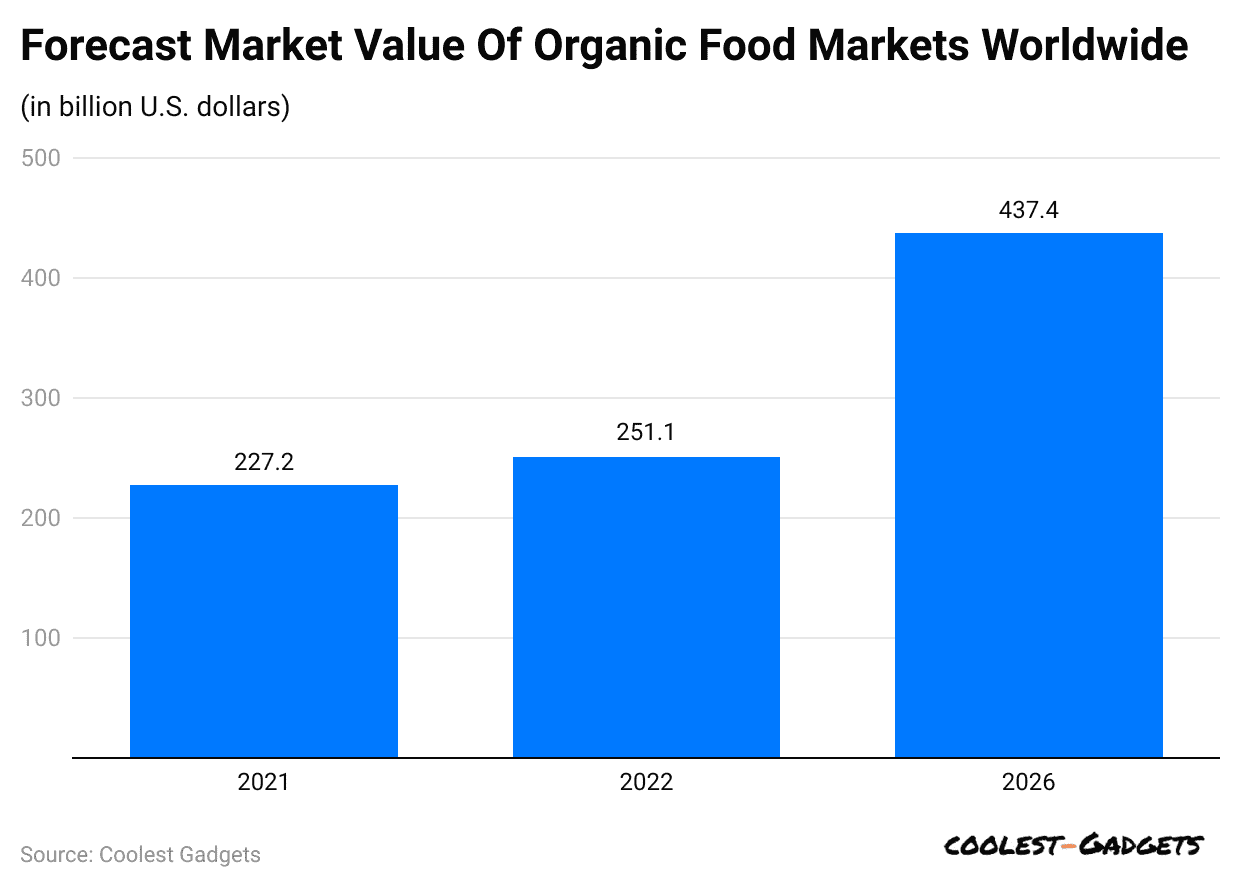 (Reference: forbes.com)
(Reference: forbes.com)
- The global organic food market was worth USD 251.1 billion in 2022 and is expected to grow to about USD 437.4 billion by 2026.
- In 2022, over 10% of the European Union’s farmland was dedicated to organic agriculture.
- The UK’s organic food and drink market achieved its 12th consecutive year of growth in 2023, increasing by 2% to reach EUR 3.2 billion.
- As of 2022, more than 96 million hectares worldwide were managed organically by at least 4.5 million farmers.
- Organic Food Statistics also elaborates that around 62% of Americans would choose organic products if they were more affordable.
- Conventional grocery retailers accounted for 55.6% of organic food sales, surpassing natural food stores.
- Millennials, especially those with children, are the most likely to spend money on organic Food.
- In 2024, most Americans believe organic produce is better for one’s health than conventionally grown produce.
Organic Food Market Statistics
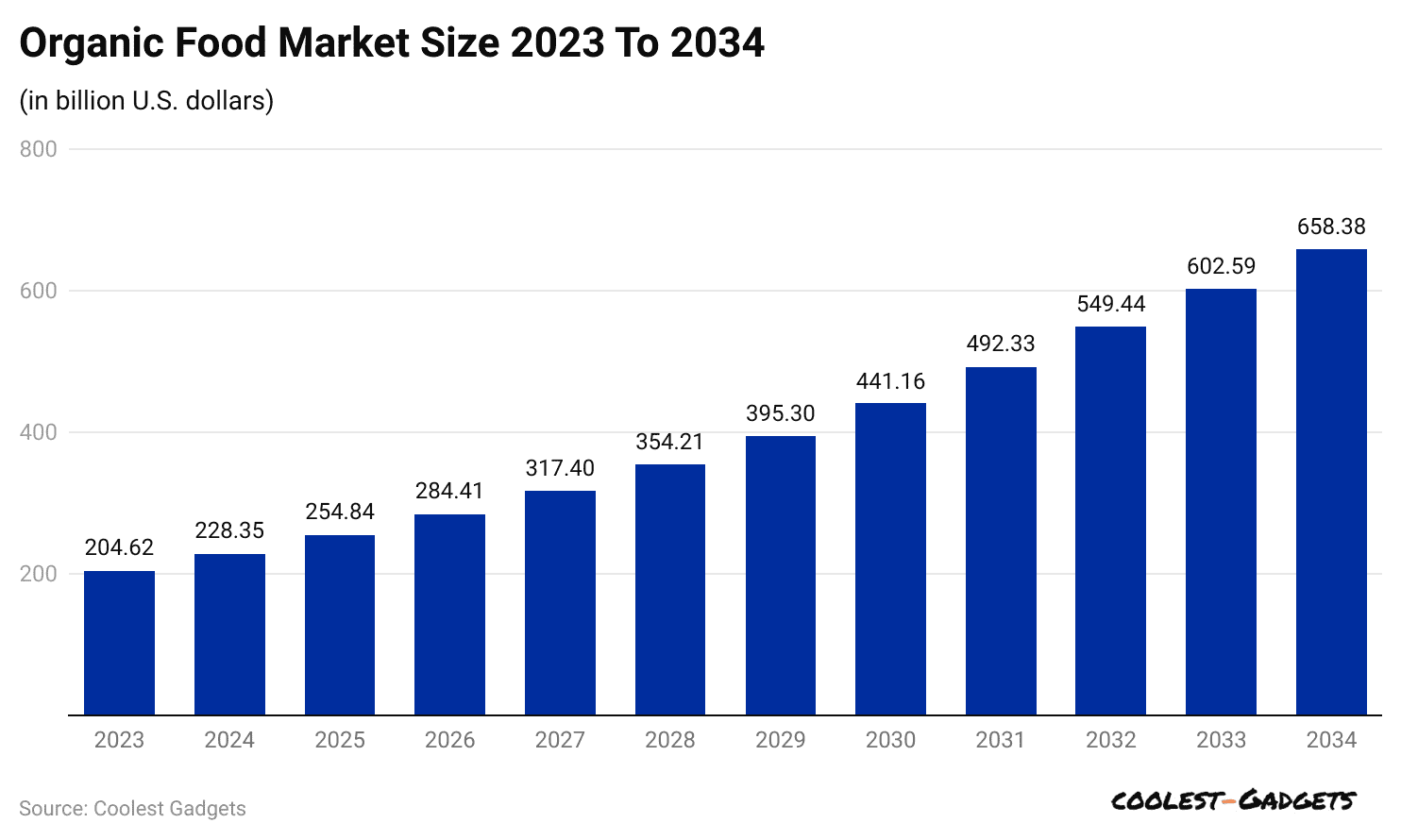 (Reference: precedenceresearch.com)
(Reference: precedenceresearch.com)
- The global organic food market will make up around USD 228.35 billion in 2024 and is supposed to grow to about USD 658.38 billion by 2034.
- This means it will grow at an average yearly rate of 11.17% over the next decade.
- The U.S. organic food market, valued at USD 63.07 billion in 2023, is expected to grow at an annual rate of 11.17%, reaching about USD 255.65 billion by 2034.
By Regions, 2024
| Regions | Market Size (USD billion) |
Market Share |
| Europe | 88.0 |
44.17% |
|
North America |
69.8 | 35% |
| Asia-Pacific | 29.9 |
15% |
|
Latin America |
6.0 | 3.0% |
| Middle East & Africa | 5.7 |
2.83% |
Organic Food Sales Statistics
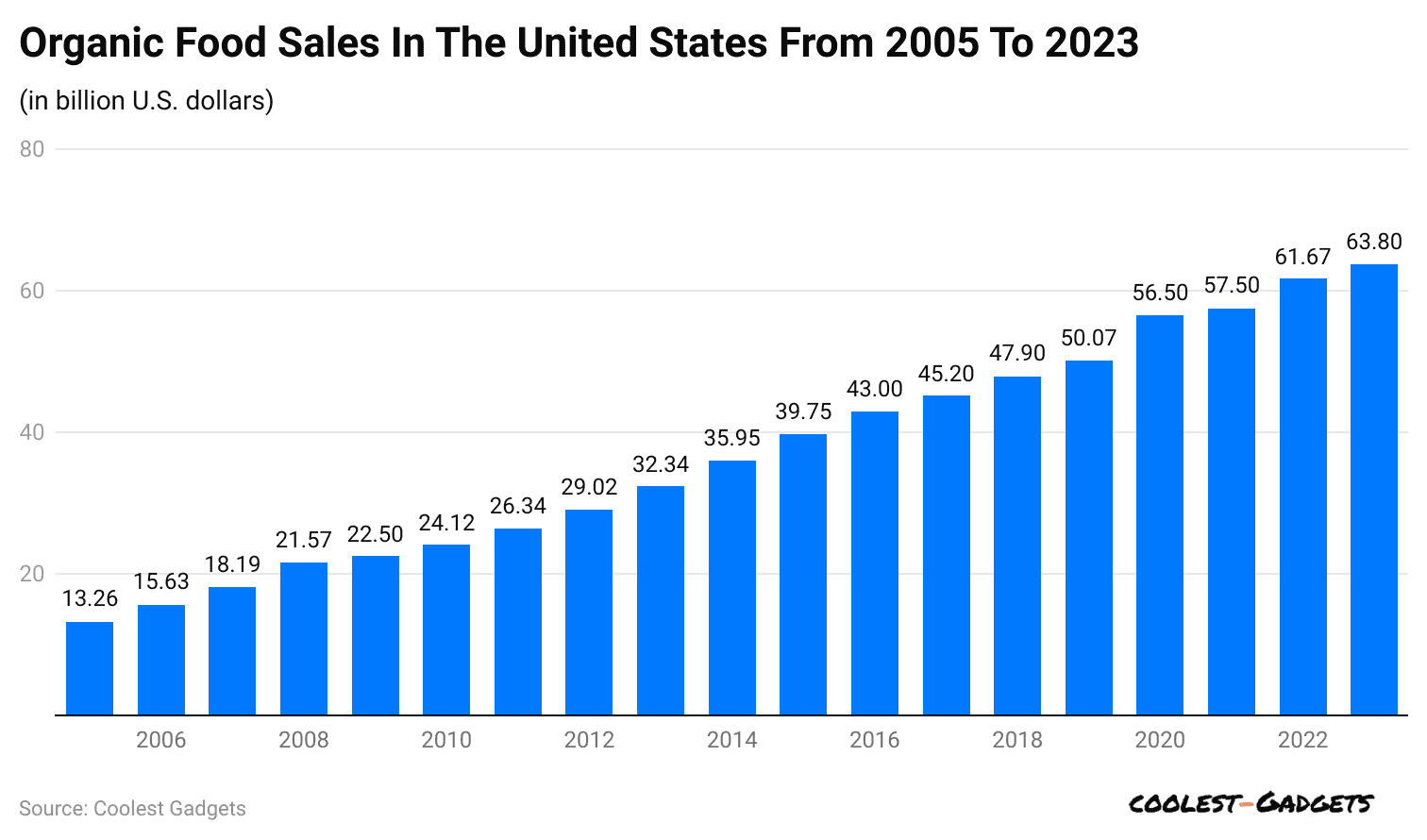 (Reference: statista.com)
(Reference: statista.com)
- According to Statista report analyses, in 2023, the United States sold around USD 63.8 billion worth of organic Food as well as USD 5.9 billion of organic non-food.
- The U.S. organic food market might grow to USD 144.15 billion by 2032, increasing yearly by 10.35%.
Organic and Natural Product Sales Statistics by Store Type
- Organic Food Statistics also show that all stores together sold around 103.6 billion dollars in organic Food, supplements, and personal care.
- Meanwhile, major natural food stores like Whole Foods and Sprouts earned USD 30.5 billion in 2023 sales.
Furthermore, other store-type sales are detailed in the table below:
| Types of Stores | Sales Value (USD Billion) |
| Compact Grocers |
21.3 |
|
Conventional Supermarkets |
20.02 |
| Independent Retailers and Coops |
11.92 |
|
Club Stores |
7.74 |
| Mass Merchandisers |
6.63 |
|
Pharmacy Chains and Independent Pharmacies |
3.5 |
| Vitamin Chains |
1.96 |
Leading Organic Items Sales Statistics
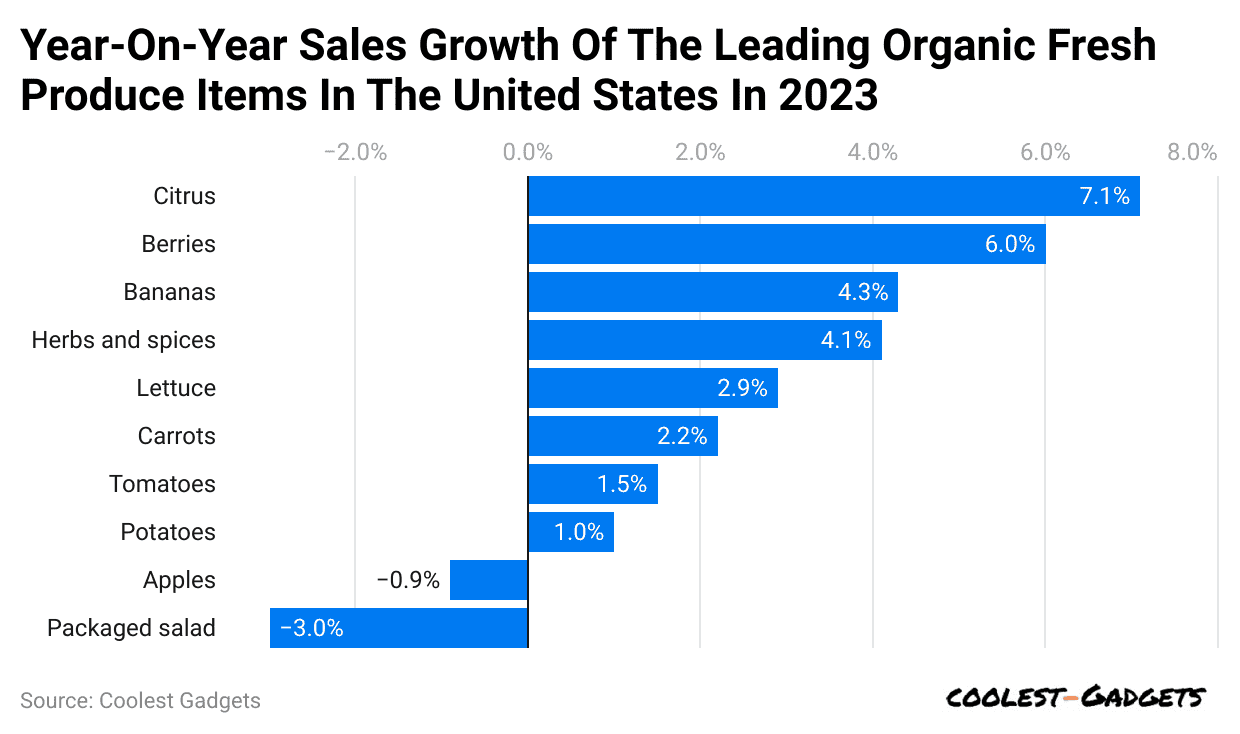 (Reference: statista.com)
(Reference: statista.com)
- In the United States in 2023, sales of organic citrus grew by 7.1% compared to the previous year, followed by Berries (6%) and Bananas (4.3%).
- Organic Food Statistics also show that year-on-year sales growth of the leading organic fresh produce items in the U.S. were represented as Herbs and spices (4.1%), Lettuce (2.9%), Carrots (2.2%), Tomatoes (1.5%), Potatoes (1%), Apples (-0.9%) and Packaged salads (-3%).
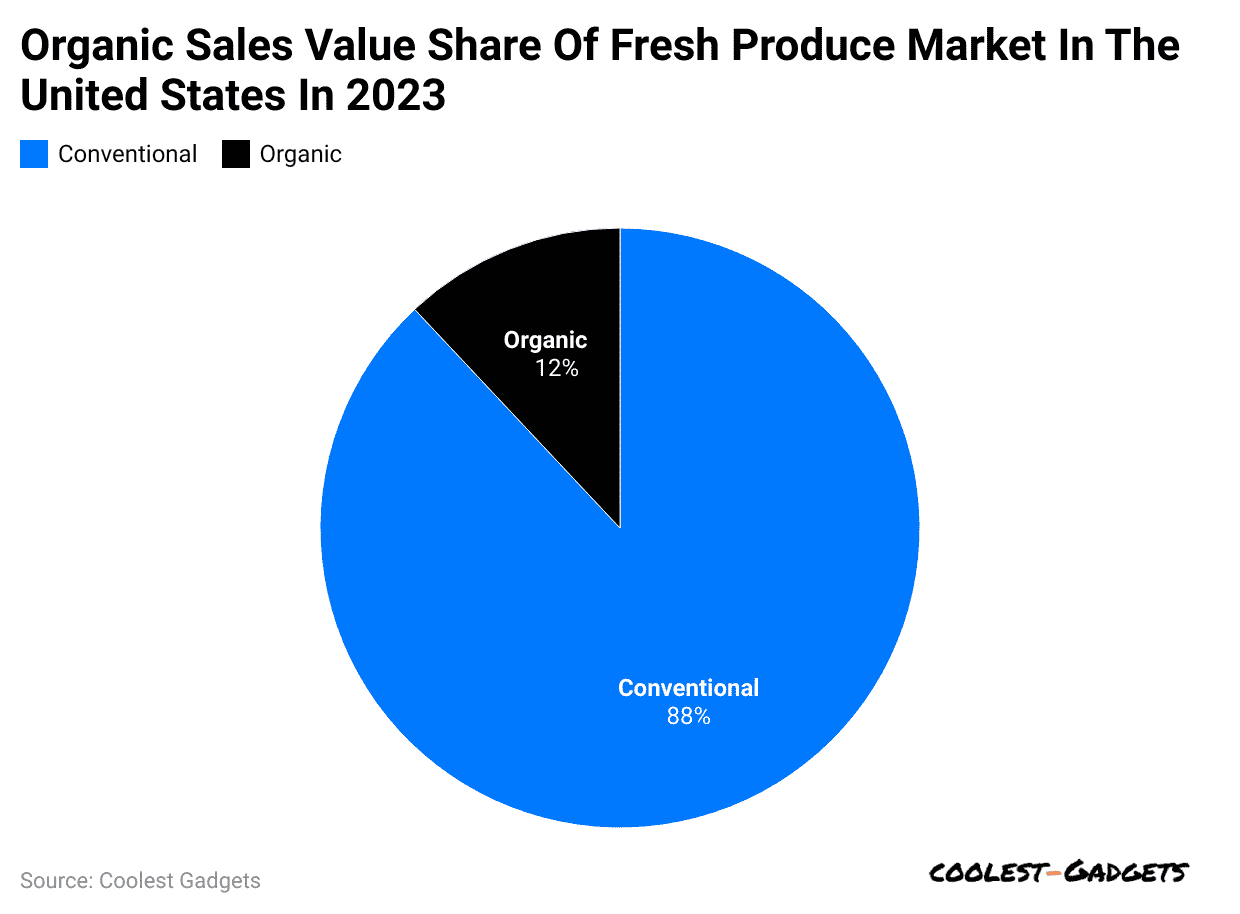 (Reference: statista.com)
(Reference: statista.com)
- As mentioned in Organic Food Statistics, in 2023, most fresh produce sold in the United States was conventionally grown, making up 88% of total sales.
- Meanwhile, about 12% of all fresh produce sales came from organic products.
Popular Organic Food Brands Statistics
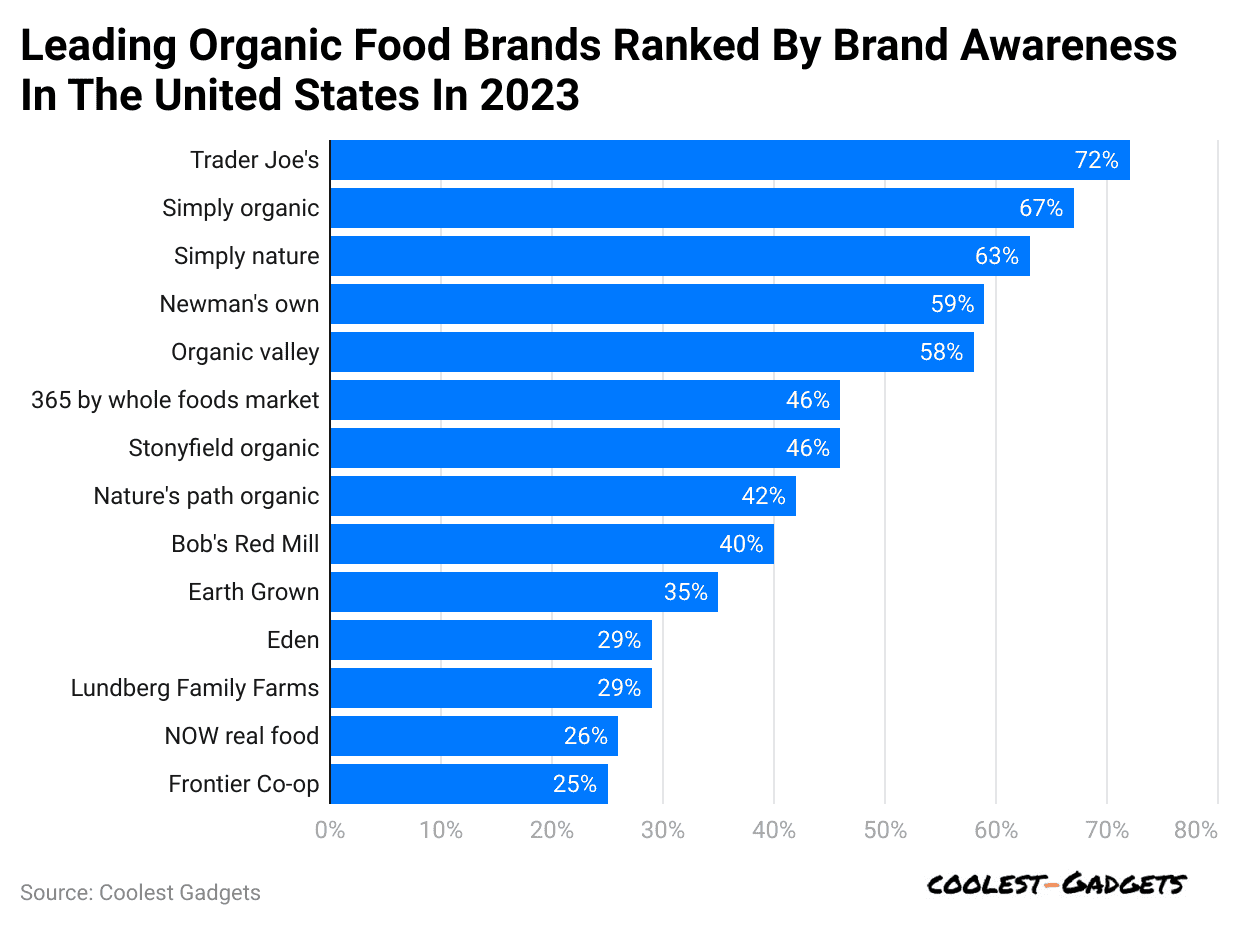 (Reference: statista.com)
(Reference: statista.com)
- Trader Joe’s is a very popular organic food brand in the United States. Based in Monrovia, California, 72% of people in the U.S. know about it.
- The second most recognized brand is Simply Organic, which is known by 67% of people.
- Furthermore, in the U.S., other organic food brands ranked by brand awareness are followed by Simply Nature (63%), Newman’s Own (59%), Organic Valley (58%), 365 by Whole Foods Market (46%), Stonyfield Organic (46%), Nature’s Pth Organic (42%), Bob’s Red Mill (40%), Earth Grown (35%), Eden (29%), Lundberg Family Farms (29%), Now Real Food (26%), and Frontier Co-op (25%).
Organic Food Statistics By Consumer’s Spending Behavior
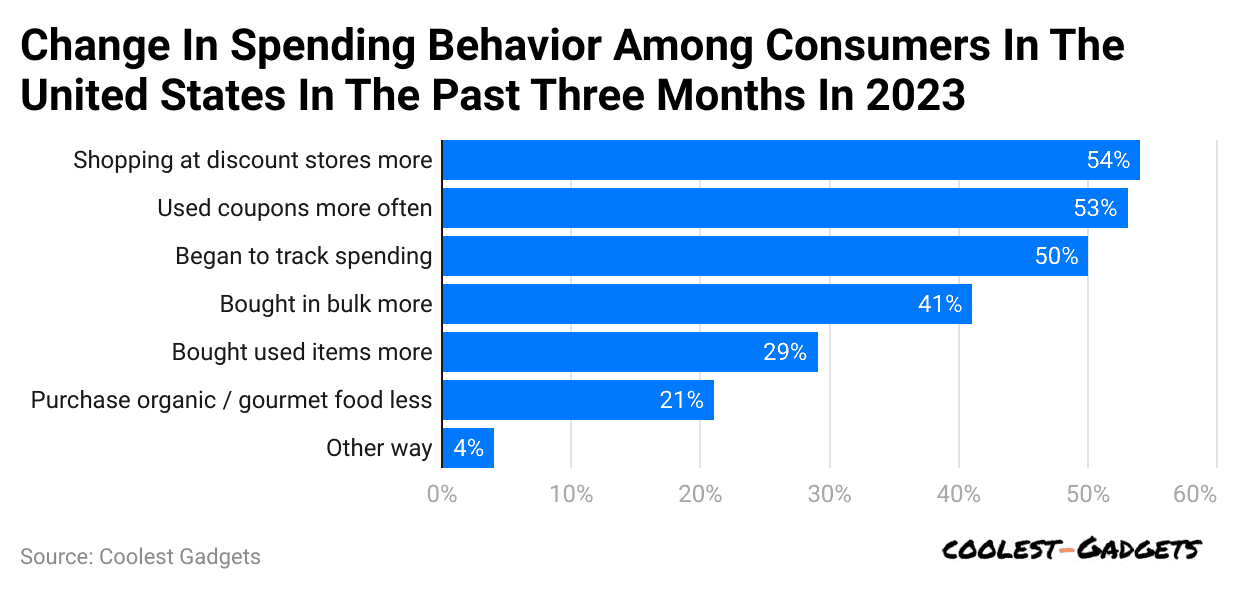 (Reference: statista.com)
(Reference: statista.com)
- In the U.S., 54% of the people said they started keeping track of how they spend more money on shopping at discount stores.
- Moreover, other changes in spending behavior among consumers are followed by using coupons more often (53%), beginning to track spending (50%), buying in bulk (41%), buying used items (29%), purchasing organic or gourmet Food less (21%) and other way (4%).
Consumer’s Habit Statistics by Purchasing Organic Food in 2023
| Purchasing Habits | Q1 | Q2 | Q3 | Q4 |
|
Yes, every chance I get |
10% | 11% | 12% | 12% |
| Yes, if it is convenient | 22% | 22% | 22% |
21% |
|
No, never |
26% | 25% | 25% | 26% |
| Occasionally, but not often | 42% | 42% | 41% |
41% |
Consumption of Organic Beverages Statistics
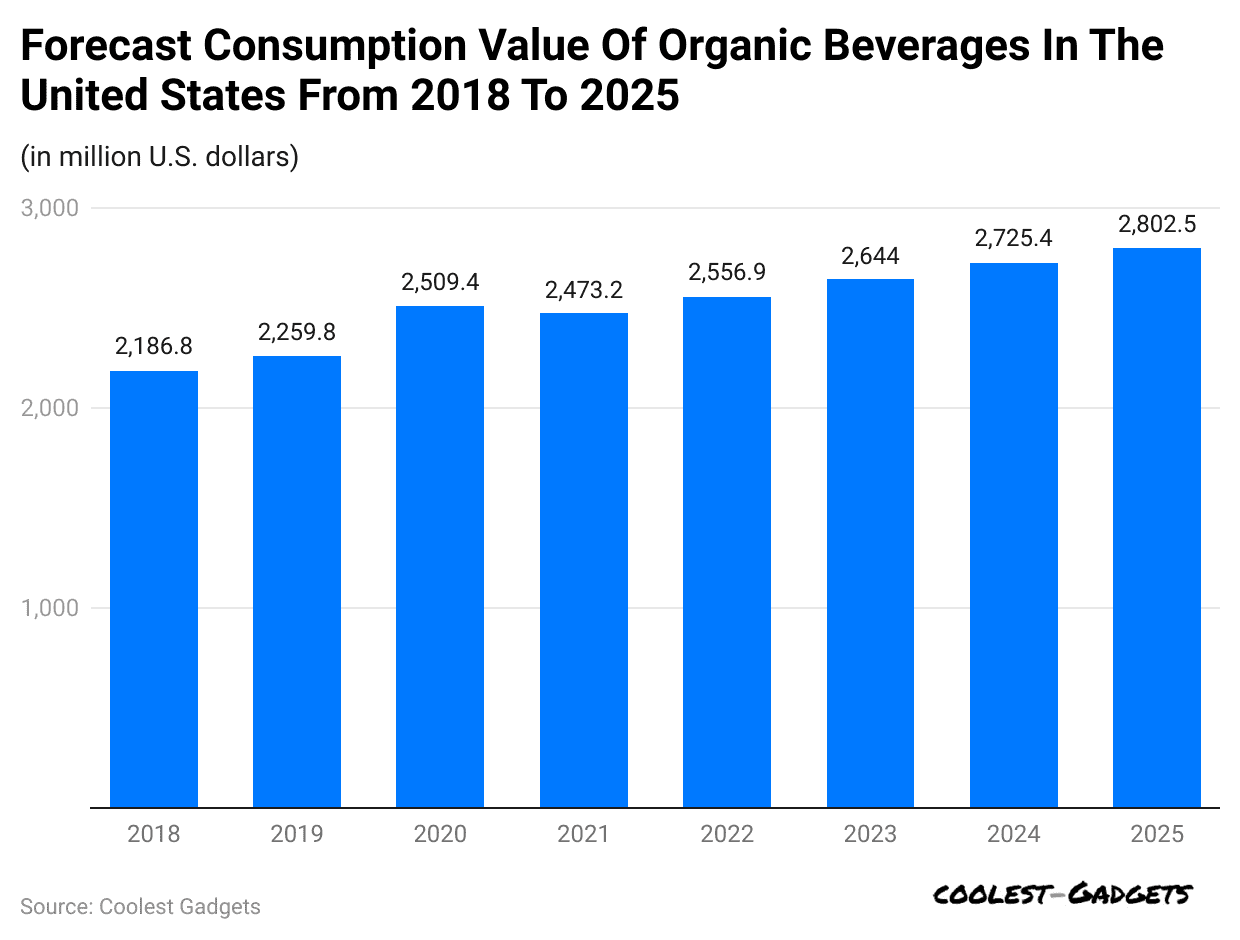 (Reference: statista.com)
(Reference: statista.com)
- A report published by Statista in 2021 shows that people in the U.S. spent USD 2,556.9 million on organic drinks, which is expected to grow to USD 2,802.5 million by 2025.
- Meanwhile, in 2023, the total valuation of organic beverages was around USD 2,644 million, and by the end of 2024, it will be approximately USD 2,725 million.
Organic Agriculture Does Not Use Pesticides To Grow Food.
 (Reference: statista.com)
(Reference: statista.com)
- Organic Food Statistics in 2024 show that many people think organic farming doesn’t use pesticides, with about 47% agreeing with this idea.
- Meanwhile, 27% of people said they weren’t sure, followed by 26% who claimed it was false.
Organic Food Market Size Statistics In India
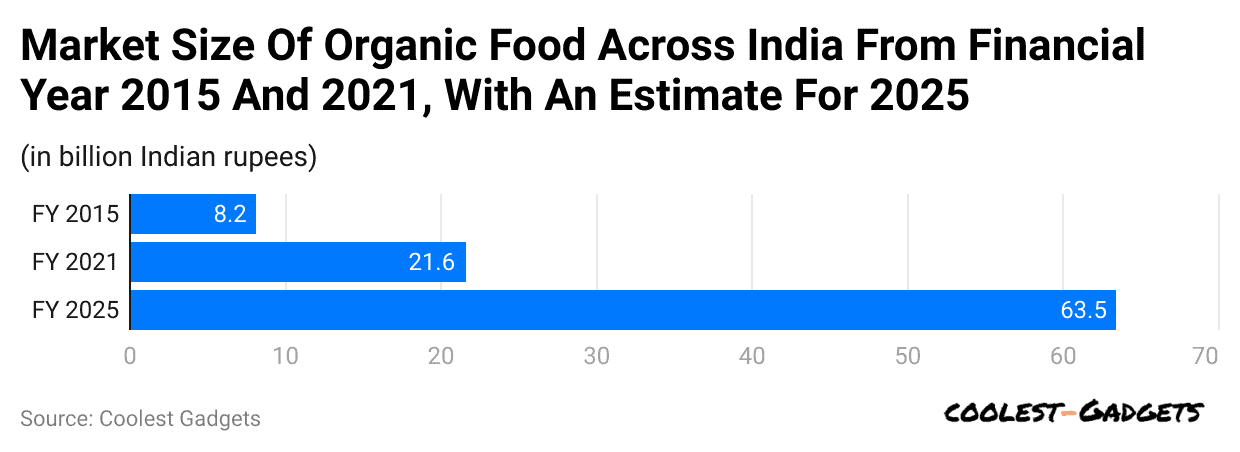 (Reference: statista.com)
(Reference: statista.com)
- Organic Food Statistics show that in the financial year 2021, the organic food market in India was valued at around 22 billion rupees.
- Meanwhile, The organic food market will reach up to around 64 billion rupees by the end of 2025.
Organic Dairy Food And Drinks Market Statistics In Latin America
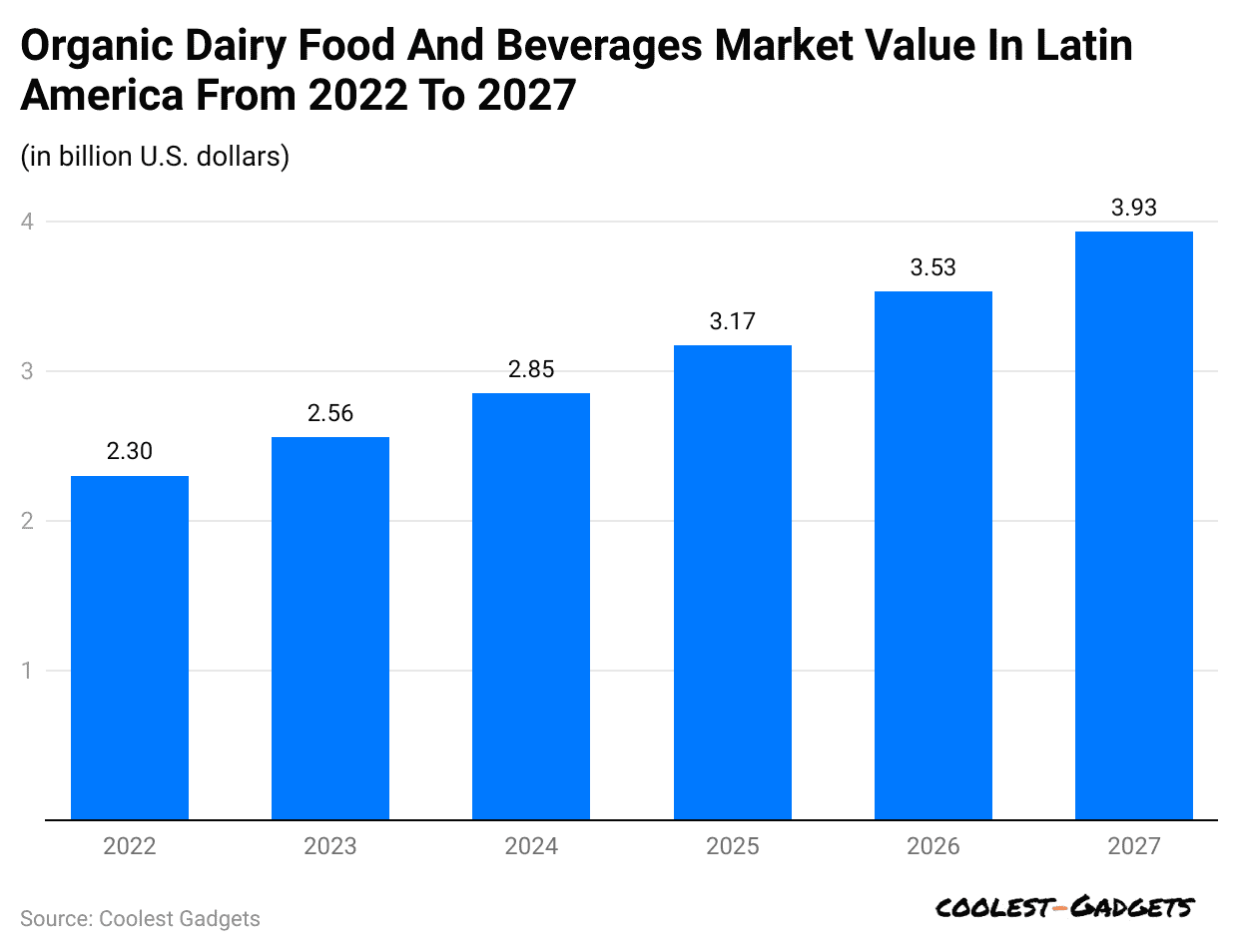 (Reference: statista.com)
(Reference: statista.com)
- In 2023, the organic dairy food and beverages industry in Latin America was around USD 2.56 billion and will reach up to USD 2.85 billion by 2024.
- However, the forecasted market value in coming years is followed by 2025 (USD 3.17 billion), 2026 (USD 3.53 billion) and 2027 (USD 3.93 billion).
Most Buyers of Organic Food Statistics By Country
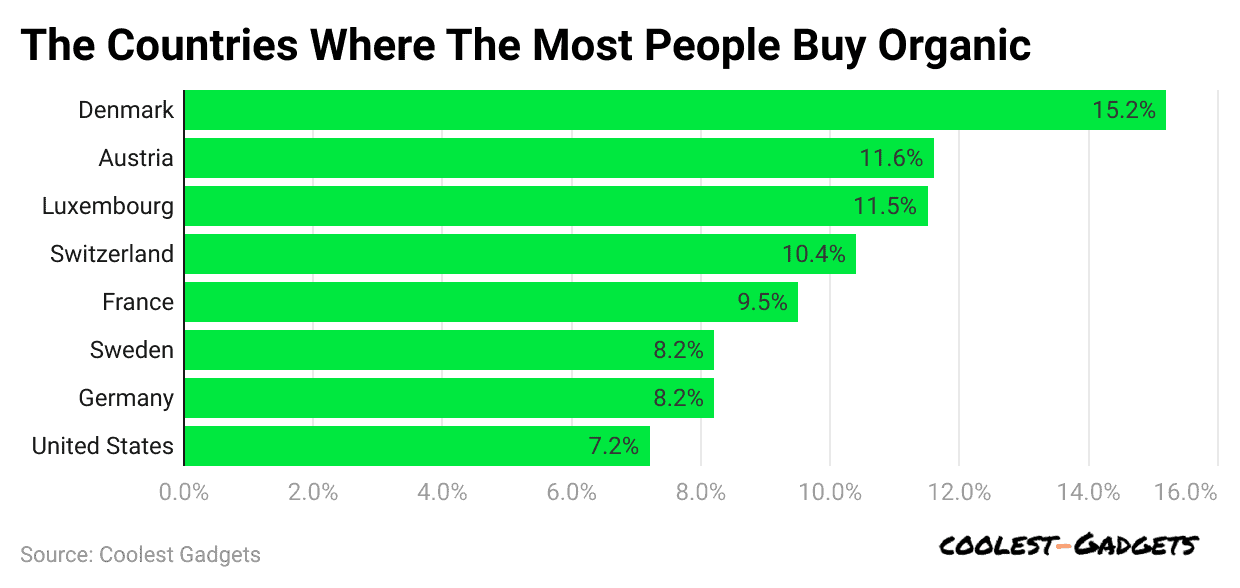 (Reference: statista.com)
(Reference: statista.com)
- A Statista report analysis states that Denmark leads in organic food sales, with 15.2% of its food market being organic.
- In addition, Austria, Luxembourg, and Switzerland are the only other countries that have achieved a share of 11.6%, 11.5%, and 10.4%, respectively.
- Other countries where most people buy organic foods are followed by France (9.5%), Sweden (8.2%), Germany (8.2%), and the United States (7.2%).
Organic Food Statistics By People Intake
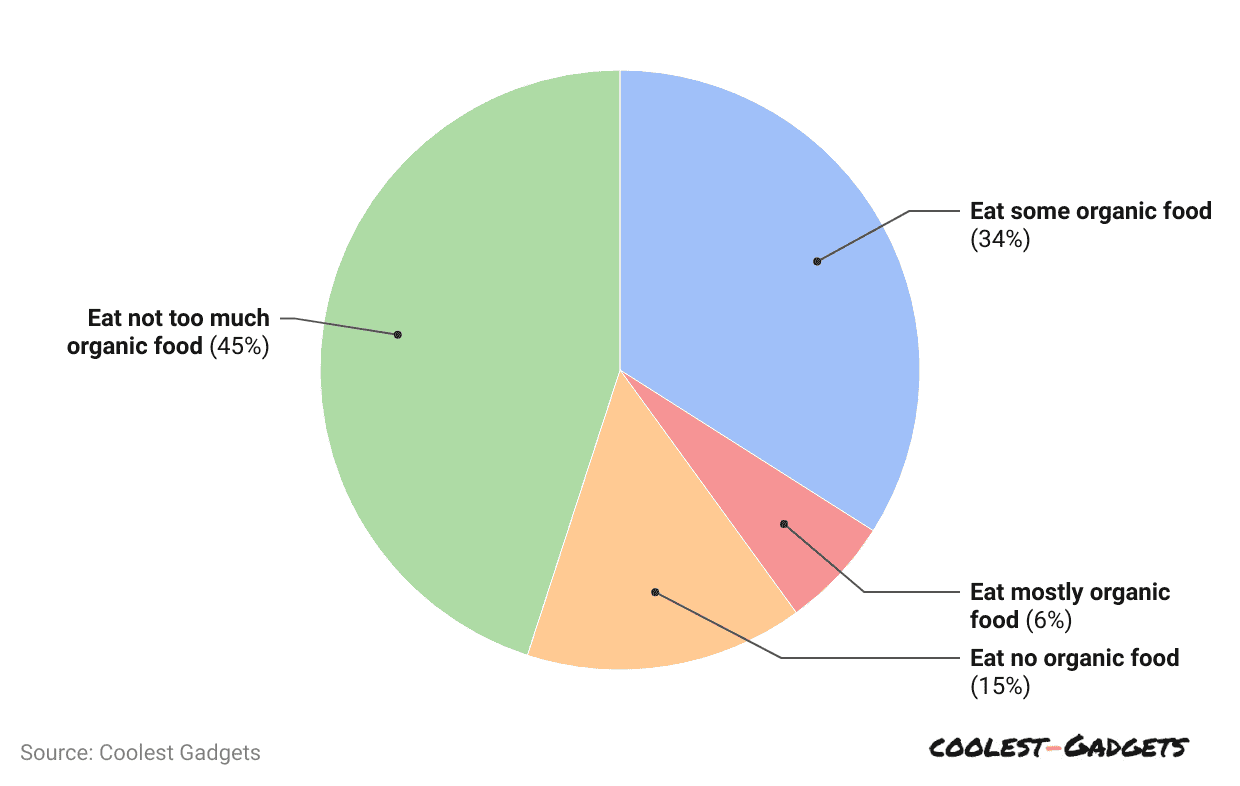 (Reference: theconsciousinsider.com)
(Reference: theconsciousinsider.com)
- In 2024, around 34% of Americans eat some organic food, 15% eat none, and 6% eat mostly organic.
- On the other hand, 45% of U.S. people will not eat organic Food in 2024.
- 73% of Americans purchased fruits and vegetables grown locally within the last month.
- In the past month, 68% purchased some organic Food.
Organic Packaged Food Market Statistics
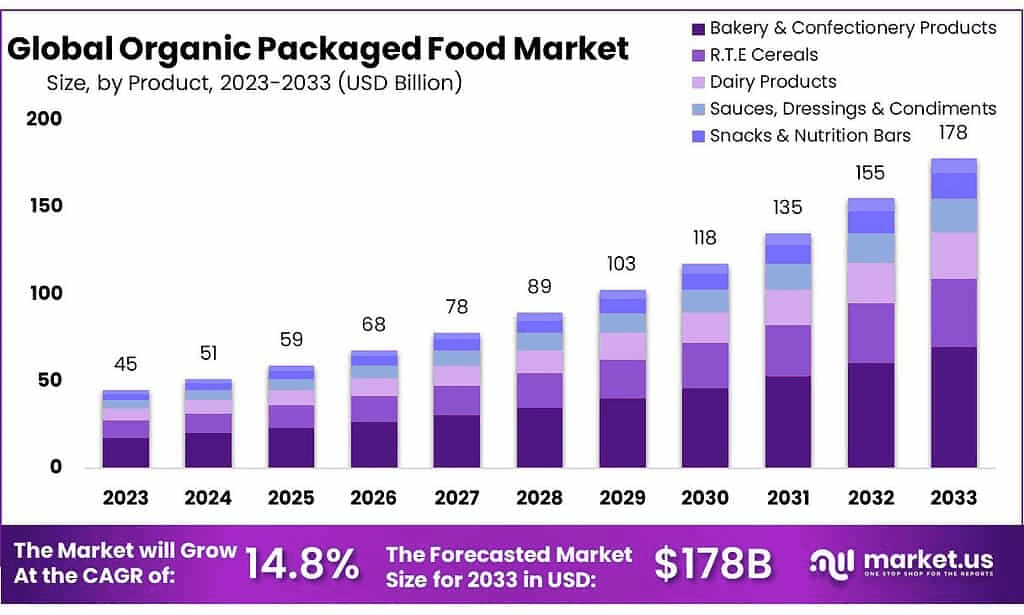 (Source: market.us)
(Source: market.us)
- By 2024, the global organic packaged food market revenue will record at USD 51 billion and is estimated to reach up to USD 178 billion by the end of 2033.
- Amy’s Kitchen is a top company in the global organic packaged food market, with 23% of the market share.
- In contrast, Albert’s Organics holds 17% of the market, and Whitewave Foods holds 12% share.
- Hain Celestial, General Mills, and Kellogg each hold 10%, while Campbell owns 8%, others 11%.
- North America leads the global organic packaged food market, holding a strong share of 51%.
- Meanwhile, about 72% of American adults think about price before buying organic instead of regular Food.
Factors Influencing Demand for Organic Food
- Over 70% of consumers report choosing organic foods for perceived health benefits.
- Moreover, 60% of Americans buy organic to support eco-friendly farming practices.
- Clear USDA organic certification attracts 55% of buyers.
- High-income households are twice as likely to buy organic than low-income ones.
- Only 40% of consumers cite limited availability as a barrier to purchasing organic foods.
Conclusion
Organic Food is a healthier choice for many people because it is grown without harmful chemicals and pesticides. It is better for the environment and supports sustainable farming. Although organic Food can be more expensive, its benefits for health and Nature make it worth considering.
Choosing organic Food helps protect the planet, supports farmers, and gives your body cleaner, more natural Food. In the end, eating organic is a simple way to care for yourself and the world around you.
Sources
FAQ.
Organic Food costs more because it needs natural farming methods, no chemicals, higher labour, and stricter certifications, raising production expenses.
Organic Food often tastes fresher because it’s grown naturally without chemicals, but taste depends on personal preference and freshness.
No, “all-natural” means no artificial ingredients, while “organic” means grown without harmful chemicals, following strict farming standards.
Organic farming is better for Nature because it uses fewer chemicals, protects soil health, supports biodiversity, and reduces pollution.
Yes, organic Food can still contain some natural or approved synthetic pesticides, but in much lower amounts than conventional Food.

Joseph D'Souza started Coolest Gadgets in 2005 to share his love for tech gadgets. It has since become a popular tech blog, famous for detailed gadget's reviews and companies statistics. Joseph is committed to providing clear, well-researched content, making tech easy to understand for everyone. Coolest Gadgets is a trusted source for tech news, loved by both tech fans and beginners.






